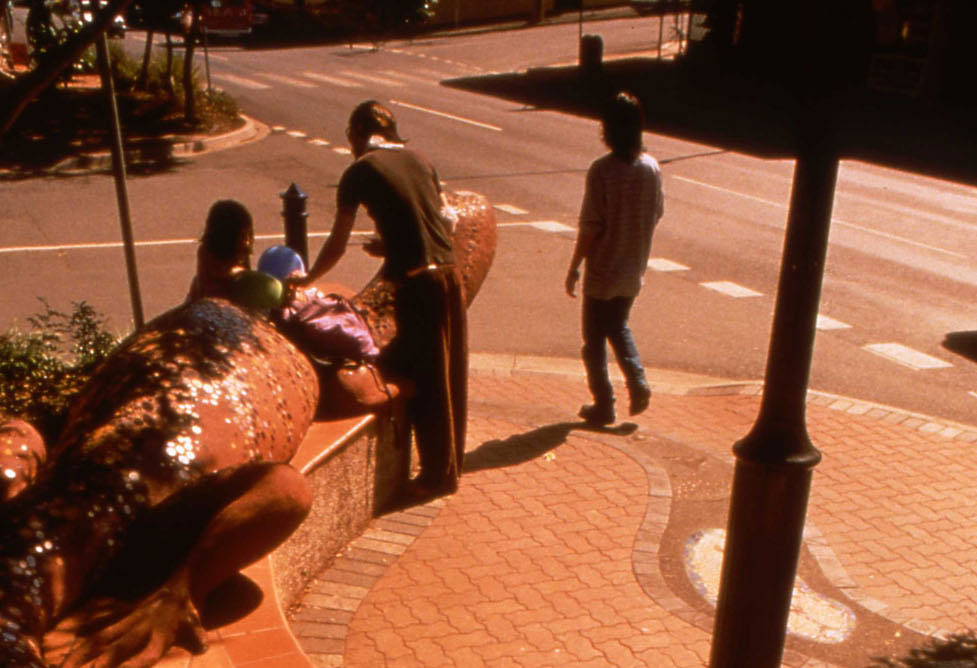How a space unfolds into a place is a
mystery. What ingredients are required to make our cities valued? We go about
our daily lives and the things we touch and feel remind us of who we are and
where we belong. For most of us the things we care about are actually small and
incidental. The small park where I walk the dog each day. The particular
laneway I choose on my journey to work, with its shady trees and old brick
walls.
Somehow over time, space becomes place. What role do designers and artists have
in this transition? Despite our best design intentions, people actually
make place for themselves.
Public art and landscape architecture are vehicles for shaping spaces, but the
mystery of how spaces become places does not always unfold. The sprinkling of
‘character’ does not guaranty that most folk will embrace our designs. People
often seem to end up valuing other things despite our grand designs. Is
time and use in place the real test?
I reflect back to one of my earliest space projects from the 1990’s, a
collaboration to make communal space out of leftover road on the
main street of West End, Brisbane. With nothing but bitumen to work with,
we brainstormed at the dance hall for a week with the locals, and decided
we needed music, a place to mingle, big shade and places for the marginalised.
Boundary street is the old edge between blacks and whites, and so
indigenous artist Joice Watson created a series of built in artworks which
could reconcile the space and link past and future cultures.
Amongst other things, we built a sinuous small stage which morphed into a
goanna, and placed a massive fig tree right in the middle of the intersection.
Artists Suzanne Holman and Helen Broadhurst worked insitu on the
goanna sculpture with the help of locals, and they were sometimes assisted
by a homeless man who lived in the park.
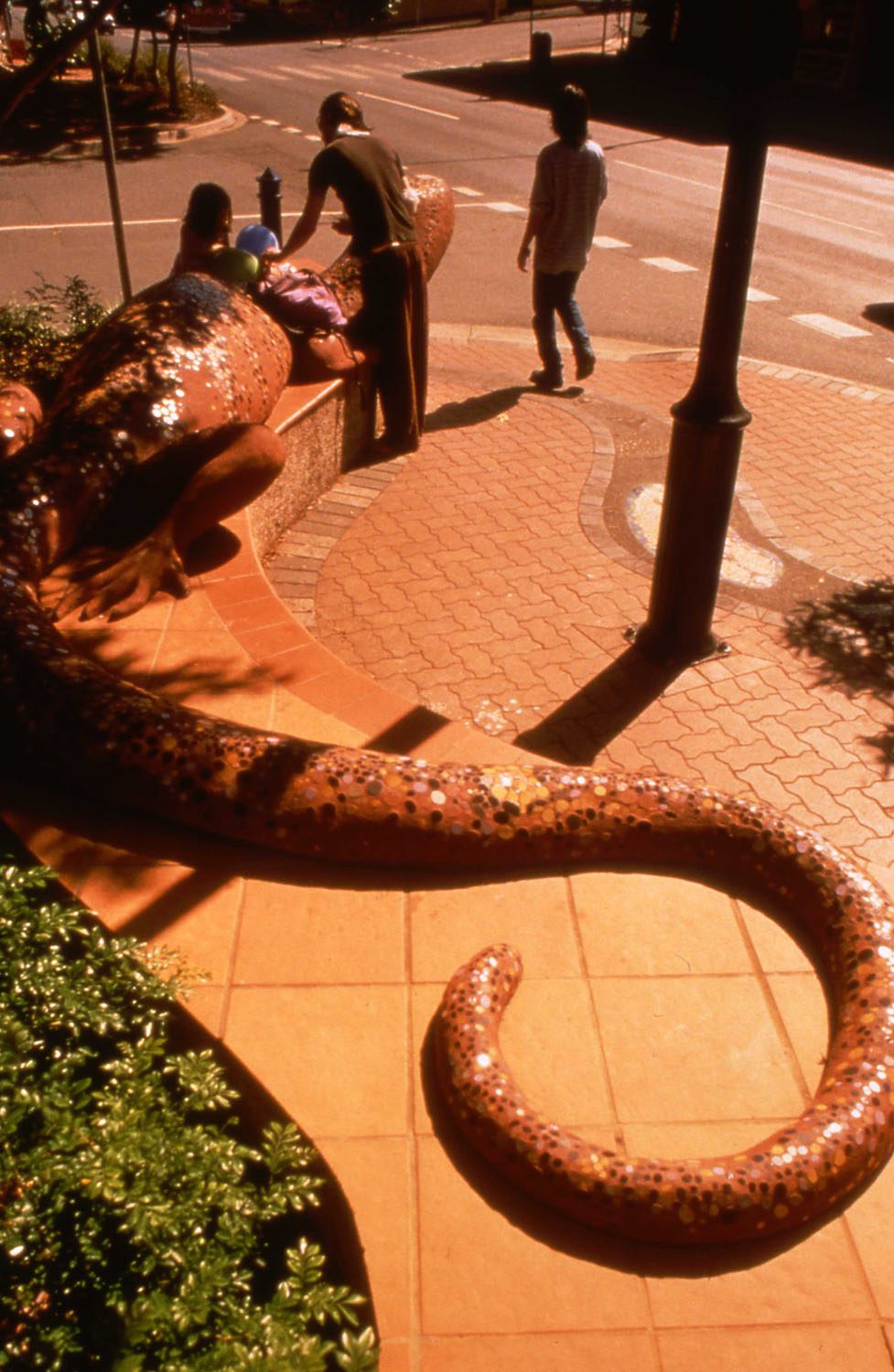
The goanna sculpture after installation 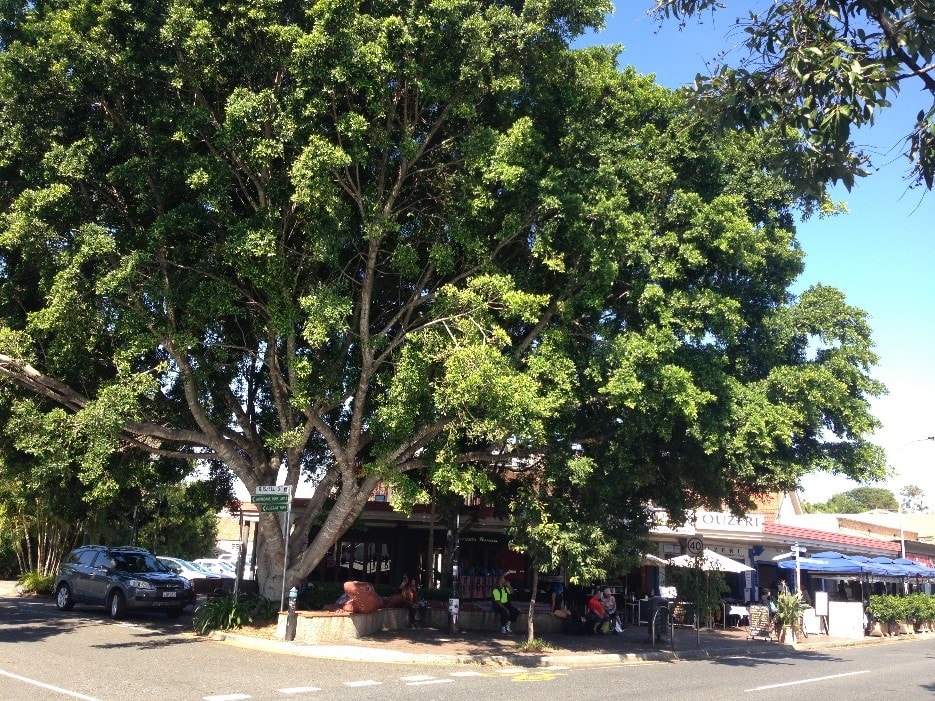
As it has grown to become a community meeting point today 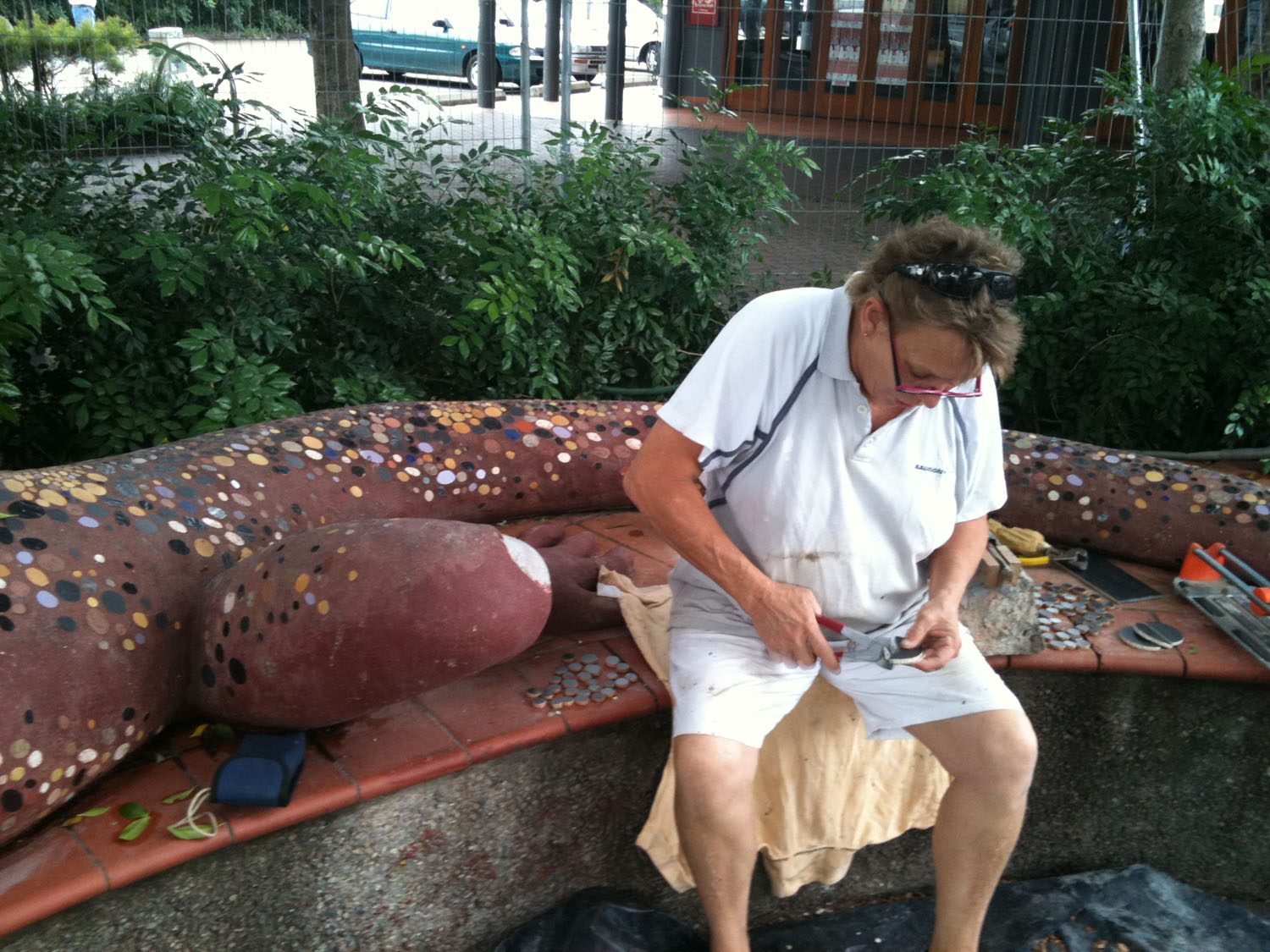
A place for resting and gathering
This small collaboration with
three artists and a community has lasted the test of time much better than
some of my larger, grander projects: Locals
dance, sing, protest, sleep and generally hang out in the folds of the
goanna, and under the big tree. The outdoor restaurants have wrapped themselves
around the emerging heart , completing the transformation from empty space.
Recently, artist Suzanne Holman tragically died in a light plane crash. Walking
past the goanna one day, my partner saw that a homeless man had
placed a sign by the goanna and stood in quiet vigil for Suzanne’s
passing .Over the following week, many signs and memorials were placed
around the space. The way artists engage with people in the process
of creating public art matters, and Suzanne’s sculptural legacy in
West End reflects this.
A more recent example of how public art and design can transform space is
Halloran’s Hill Lookout in the North Queensland Tablelands. The town of Atherton was undergoing a civic
renaissance under a statesman mayor, and one of our key projects was to
transform a lookout with car park and a telstra tower into something more.
A series of artworks were commissioned to enliven the hilltop, including
works by emerging local artists. Artist Mona Ryder created a series
of intriguing, tall sculptures reminiscent of the ancient plants that
might have inhabited the ancient rainforest in the volcanic cone of the hill.
These organic totems resonate with the space and the rainforest, creating
curiosity and wonder. Interacting with the vistas and landscapes of the site,
this public art really does help the space unfold into a unique
place. Designers can collaborate with artists to create meaningful local
culture. In regional Australia, there are rare opportunities for local
artists to gain experience in public realms. Architects and Landscape
architects can invent programmes and spaces in their projects to make this
happen.
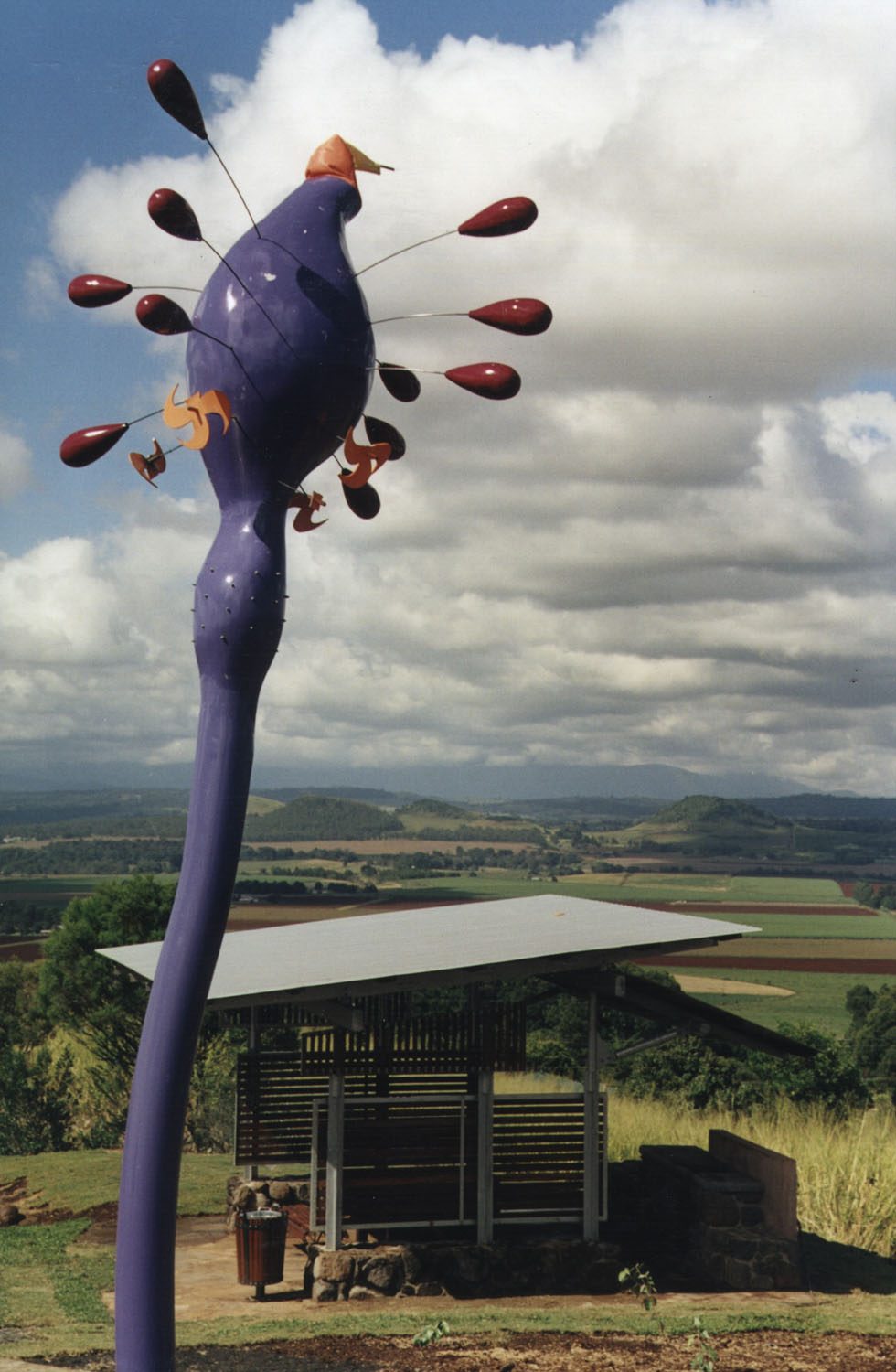
Halloran’s Hill Lookout, Atherton 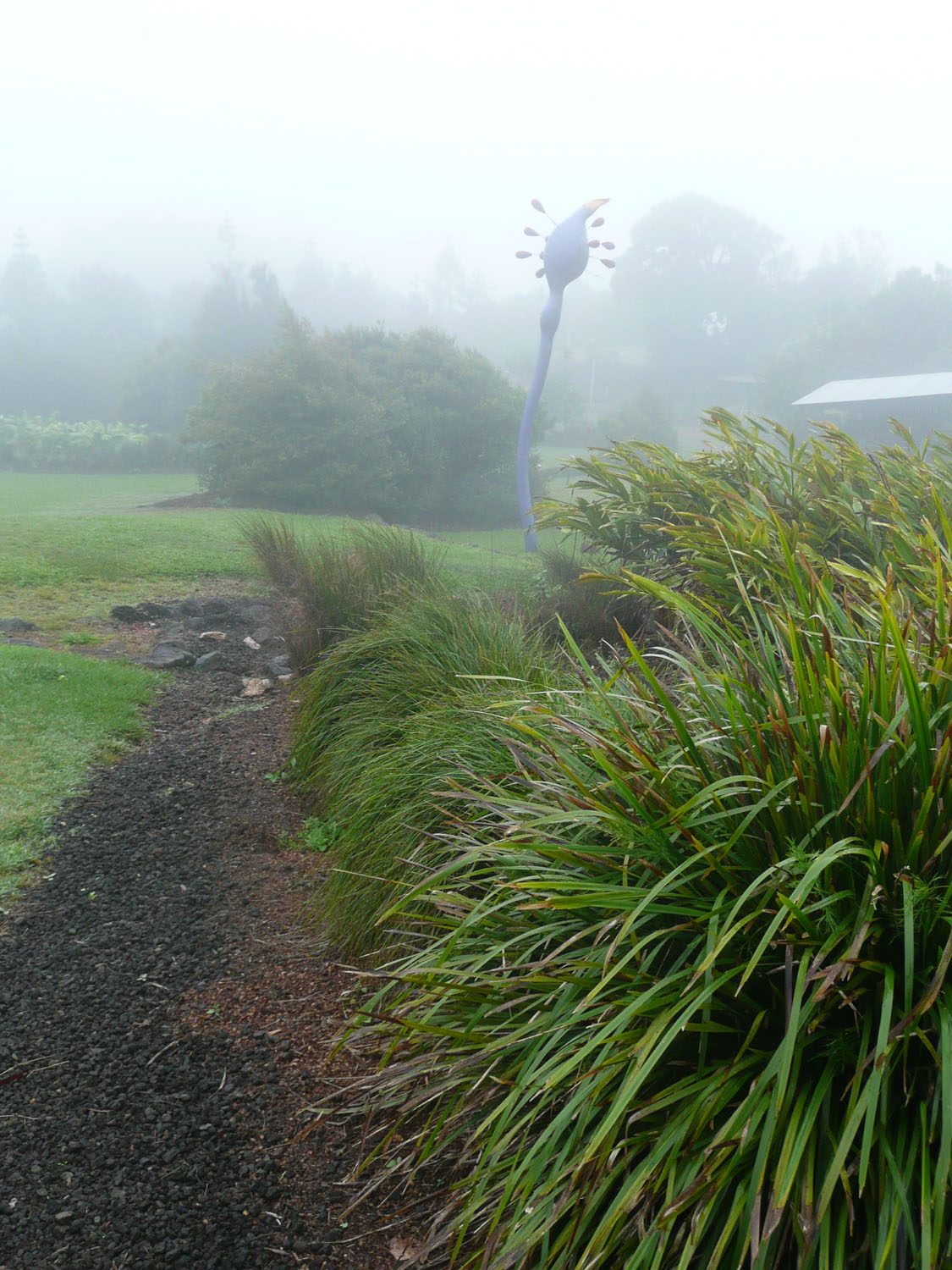
Artwork that creates curiosity and wonder, Halloran’s Hill Lookout, Atherton
Until its demise recently, Queensland had a programme called Art +Place which provided the funds, support and strategic direction for creating public art which responds to place. A casualty now of cost cutting and governmental change, Art + Place managed to deliver some good works over a number of years. At kangaroo Point, an old educational training site above the cliffs overlooking the city of Brisbane was transformed into a civic park with a public art focus. Art +Place funded a design charrette to redirect the park making process. This brainstorming, which involved artists and designers, along with project managers, invented a series of public art projects to add life and meaning to the new spaces. The park has become a regional and citywide destination, but now it is more than just a great panorama. My favourite artwork are the relief screens built into the cliff fronting arbors. This quiet but beautiful insertion is the work ‘Seven Versions Of The Sun’ by indigenous artist Daniel Boyd. Highly polished golden panels with motifs of the sun create beautiful cast shadows. Such enigmatic interventions, like large scale jewellery for the city, remind us why art in the landscape is worth fighting for, creating qualities and experiences we never imagined.


